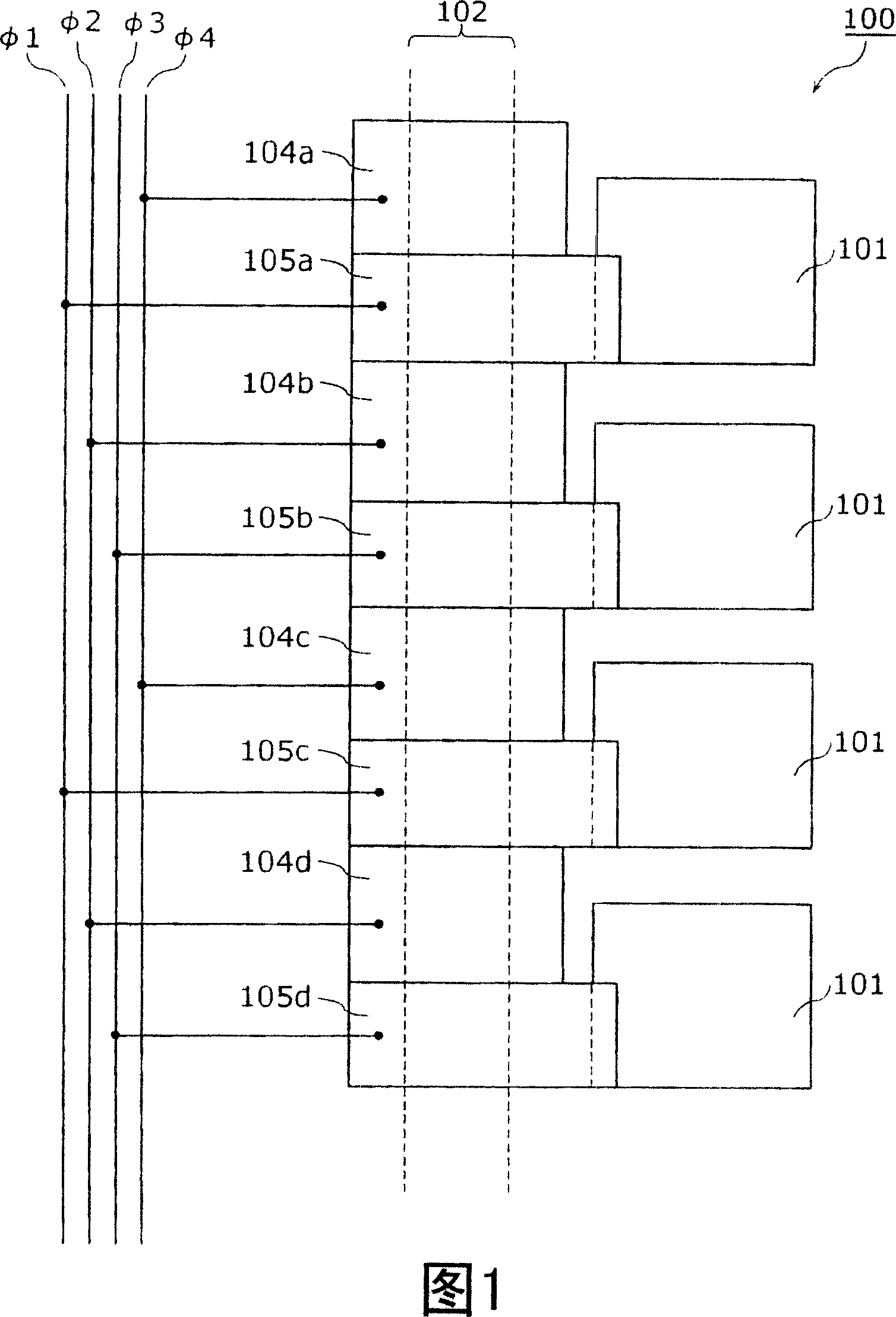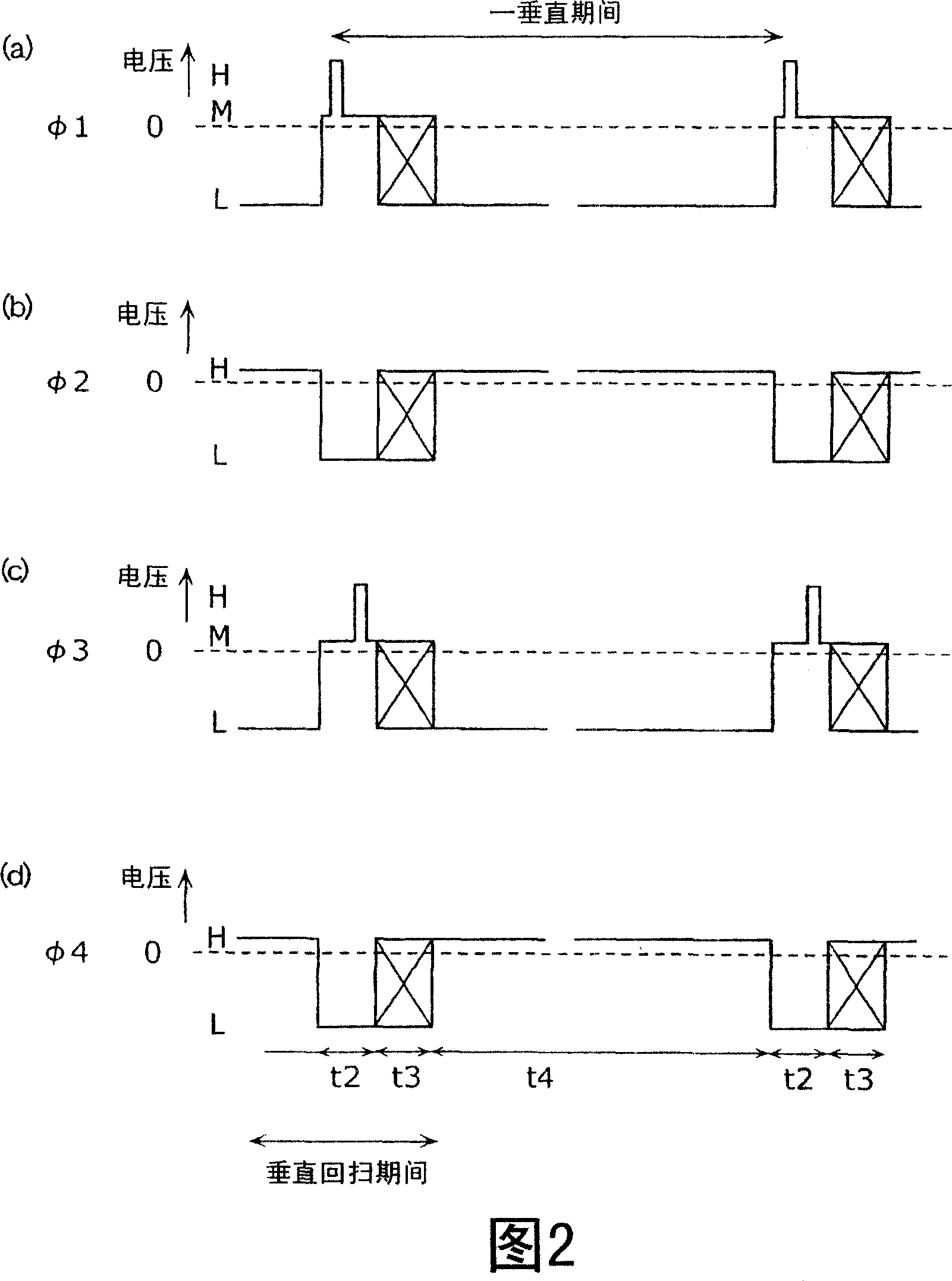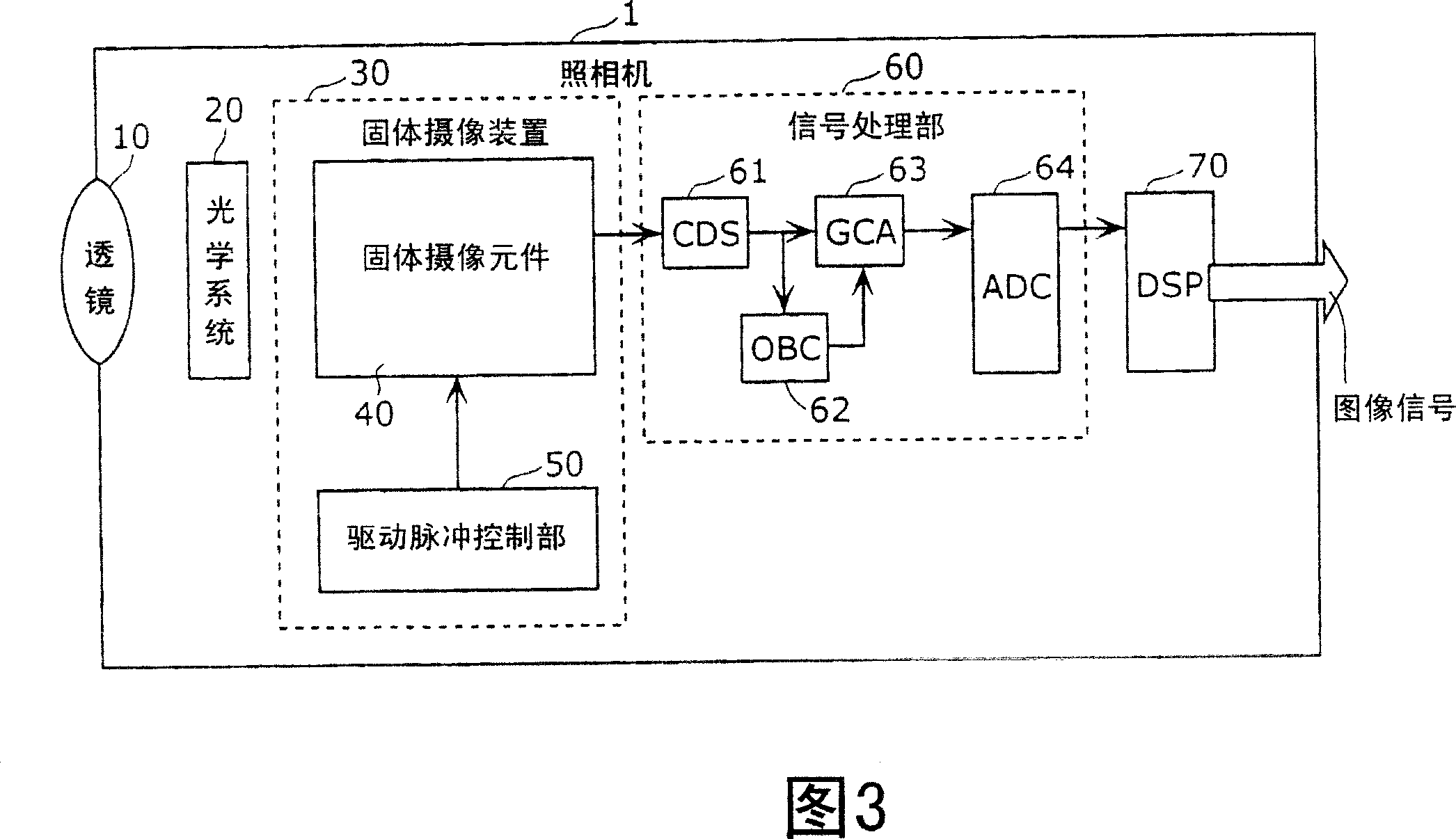Solid-state imaging apparatus and method for driving the same
A solid-state imaging device and solid-state imaging element technology, which is applied to the field of white spots during long-second accumulation, can solve problems such as white spot generation, hindering charge readout, and reverse injection, and achieves the effect of preventing white spot and high practical value
- Summary
- Abstract
- Description
- Claims
- Application Information
AI Technical Summary
Problems solved by technology
Method used
Image
Examples
Embodiment approach 1
[0056] FIG. 3 is a diagram showing the configuration of a camera using the solid-state imaging device of the present embodiment.
[0057] As shown in Figure 3, the camera 1 has: the lens 10 that makes the optical image of the object imaged on the imaging element; optical systems 20 such as mirrors and mechanical shutters that optically process the optical image passing through the lens 10; A solid-state imaging device 30 ; a signal processing unit 60 ; and a digital signal processor (hereinafter also referred to as “DSP”) 70 and the like.
[0058] The solid-state imaging device 30 has a solid-state imaging element 40 and a drive pulse control unit 50 .
[0059] The solid-state imaging element 40 is realized by a CCD image sensor or the like, and outputs pixel signals corresponding to the amount of received light.
[0060] The drive pulse control unit 50 drives the solid-state imaging device 40 by generating various driving pulses to the solid-state imaging device 40 at variou...
Embodiment approach 2
[0147] Next, Embodiment 2 of the present invention will be described. In Embodiment 2, charges are read out to the vertical CCD at a driving timing other than that of Embodiment 1 or at a new driving timing different from that of Embodiment 1. FIG. That is, if the solid-state imaging device can read out the charges accumulated in all the photodiodes to the vertical CCD through N times of readout operations, then when the transfer operation of 1 field or 1 frame is started, as " "Connection action", for the continuous 2N gates composed of N readout gates and N non-readout gates, apply all 2N gates sequentially (that is, staggered timing) to make each gate from a low voltage state A driving pulse that becomes an intermediate voltage state.
[0148] That is, in this embodiment, a function of performing a connection operation during a connection period is added to the solid-state imaging device and the camera described in the first embodiment. Here, the connection period refers ...
PUM
 Login to View More
Login to View More Abstract
Description
Claims
Application Information
 Login to View More
Login to View More - R&D
- Intellectual Property
- Life Sciences
- Materials
- Tech Scout
- Unparalleled Data Quality
- Higher Quality Content
- 60% Fewer Hallucinations
Browse by: Latest US Patents, China's latest patents, Technical Efficacy Thesaurus, Application Domain, Technology Topic, Popular Technical Reports.
© 2025 PatSnap. All rights reserved.Legal|Privacy policy|Modern Slavery Act Transparency Statement|Sitemap|About US| Contact US: help@patsnap.com



